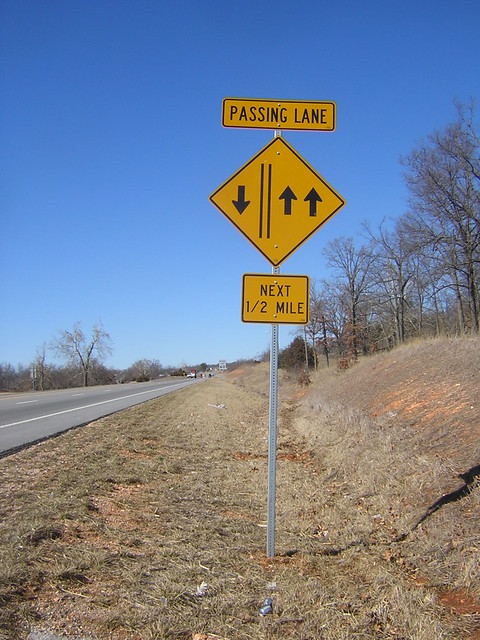Going with the theme from the last post, here's some drop back stuff that might interest some of you flexbone nuts! I used to keep things simple and mirror my routes to either side in the flex, however, with the Air Raid craze that has taken over the football landscape, there is a need to evolve the flexbone passing game. I'm going to show you some simple concepts, both Air Raid and Run and Shoot you can add to your arsenal of weaponry with little teaching time so that your team can still master the triple option. This concept of teaching time is very important to flexbone coaches, as the attention to the passing game gets lost due to the intricate time needed to spend working and perfecting the reads in the run game. However, this does not mean you cannot have a good passing game in the flexbone. I think the concepts you choose need to be limited, very simple, and little to no reads on the part of the QB (he has enough on his plate already).
Levels
Levels has been written about tons of times (as seen here and here), so I'm not going to go into grave detail on the subject, other than this concept fits the flexbone very well. Since the flex, is a 2x2 offense in the base formation, the concept is very simple. There are two sides to the play, the clear out side and the "in" side. These concepts must be tagged so I would tag the clear out side by simply calling "right" or "left" and that call (ie. Levels Left) would dictate what side of the offense was going to be the clear out side. To the clear out side, the wide receiver runs a takeoff and the slot will attempt to bust the middle of the coverage wide open. Here's the key to the success of the play is the clear out side slot's read. He's the only receiver reading anything, and all he does is "run to daylight". So if the defense is MOFO (2 high safeties), the slot is going to run a skinny post splitting the safeties. If the defense is MOFC (1 high safety), then the slot will run right up the hash mark. To the "in" side, the inside slot is basically running a five yard "in" route while the wide receiver will run his "in" route at a depth of 10 to 12 yards. The B back, will release to the call side flats on an arrow route and look for the ball immediately if call side LB blitzes. Here is the concept drawn up out of the base set:
 |
| This would be the route combo vs. MOFO defense |
This concept can also be run out of trips as well, with the A and Z backs switching their assignments. The A back will now clear out the middle of the coverage with the Z back running the five yard "in" route.
 |
| Levels from a trips set |
NCAA
A real popular route combination is the NCAA route. As most know, the reason for the naming is because of the commonality of the passing concept in college football. The NCAA concept is another passing concept that with a few tweaks can be formulated to fit into the flexbone passing game.
The NCAA routes involve a post, a dig, and two drag routes. In my mirrored route scheme, I had double post and double drag (shown below) tagged as the "six route". Any time we wanted to run the NCAA combo, I simply tagged which WR was going to run the dig route.
 |
| 6 Route |
The NCAA concept can also be run from the trips formation as well. When doing this though, I recommend having the A back convert his route into a wheel route.
Shallow Cross
Shallow cross is another passing concept that works well in the flexbone offense. This concept is very similar to Levels, but with a few different route combinations. Again, in 2x2 I recommend tagging the side of the offense that will be running the shallow cross, to keep things from being too confusing for the players. In the diagram below, you can see the route combinations set up as follows; the Y will run the shallow cross, basically being a drag in front of the LB's. The slot to the tagged side runs a corner route, 10 yards in depth. Away from the call side the A back is going to run a five yard "in" route. The receiver away from the tagged side will run a deep post route. Shallow cross attacks the bottoms and tops of every zone the defense is playing, thereby making a zone dropping defender's job much more difficult because there is a decision to be made. Defenders do not like to have choices, they want to react and attack and concepts such as the Shallow cross do not allow defenders to attack, because if they do, then receivers are open.
 |
| Shallow Cross from trips |
Run and Shoot
A lot of people ask me "What routes go best with the flexbone", and my usual answer is "Run and Shoot". The problem with the shoot is that it is a very time intensive passing attack to install. Flexbone QB's are not going to have the time to learn the reads and routes that a true RNS QB will have. However, there are some very good concepts that can be utilized in the drop back passing game (some of these concepts have been discussed before).
I'm not going to elaborate much here as there are some really good reads on RNS passing, what I am going to tell you is that you will not have the time you need to dedicate to truly run RNS passing in it's purest form. However, you can use the concepts, with some tags to put your team in a position for success with very little coaching time involved. Check the links below for more RNS passing information.
Understanding the Trickeration
Smart Football's Run and Shoot Articles (Chirs does an excellent job of dumbing down the RNS concepts).
- Part 1-Simple Approach to Run and Shoot
- Part 2- The Seam Read and the Go Concept
- Part 3- The Choice Concept
- Part 4- The Streak
The zero route in my offense meant exactly that, no route was called and the receivers were to listen for the tags. Some concepts I ran were comeback, slant, and hitch. If the zero route was called and then "comeback" was added to it, then the receivers would all run comebacks, as shown below.
 |
| Comebacks |
Here are the others also:
 |
| Hitch |
 |
| Slant |
 |
| Out |
Looks like we were real original with the names right?! The coaching point for the flexbone coach using the spacing concept is to teach receivers to move around into open areas once they run their routes (this is not how spacing is taught in "mainstream" passing offenses, there, the receivers run to the voids and make reads on the run much like RNS receivers do). I only did this the two years I had what I would have considered a "good passer", but it was an easy install, as we had some pretty good wide receivers to go along with our gunslinger that year.
Conclusion
Mirrored routes are great in the flexbone, and an offense can go along way by utilizing this simple concept. However, if you want more out of your passing game in the flex, I suggest adding one, maybe two of the above concepts. The reason I would keep that number so low is the fact that any addition to the passing game requires time to install, and any time taken from the run game, in the flexbone, can be dangerous. Another item to consider is pass protection, as the above concepts are all drop back in nature, the OL will have to protect more than usual. I think the flexbone OC should have at lease one of these concepts under his arm going into every season (mine was Levels), and then only add some if he feels his team absolutely needs them.
Duece








Tidak ada komentar:
Posting Komentar